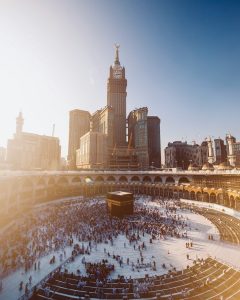Sacred Marvels: The Tallest, Oldest, and Most Accommodating Temples of the World’s Major Religions
From soaring spires to ancient stone sanctuaries, temples are more than places of worship—they are symbols of devotion, cultural pride, and architectural achievement. Across continents and centuries, the world’s major religions have built temples that defy time, gravity, and even capacity. Here, we explore record-holding temples of Hinduism, Buddhism, Christianity, Islam, and Judaism, each a monumental tribute to the human spirit reaching for the divine.
Tallest Temple: Ulm Minster (Christianity, Germany)
Height: 161.5 meters (530 feet)
Though technically a church, Ulm Minster in Germany holds the record for the tallest religious building in the world. Construction began in 1377, and its Gothic spire, completed in 1890, pierces the sky at over 161 meters. Originally Catholic, it became Lutheran after the Reformation. Visitors can climb 768 steps to enjoy panoramic views over Ulm and the Danube.
Tallest Hindu Temple: Ranganathaswamy Temple Tower (India) – Its Rajagopuram (main gateway tower) in Srirangam stands 72 meters tall, completed in 1987 atop a centuries-old complex.
- Unknown author
- Leiden University Library, KITLV
Oldest Continuously Used Temple: Mundeshwari Devi Temple (Hinduism, India)
Established: circa 108 CE
Hidden in the hills of Bihar, Mundeshwari Devi Temple is possibly the oldest functioning Hindu temple in the world. Dedicated to the goddess Durga and god Shiva, it has been a center of worship for nearly 2,000 years, surviving invasions, neglect, and time.
Oldest Buddhist Temple: Mahabodhi Temple (India) – Built in the 3rd century BCE near the Bodhi tree where Siddhartha Gautama attained enlightenment.
Oldest Christian Church (still in use): Church of the Nativity (Bethlehem, Palestine) – Dating to the 4th century CE, marking the traditional birthplace of Jesus.
Oldest Synagogue in Continuous Use: Etz Hayyim Synagogue (Greece) – Dating back to at least the 15th century, possibly earlier, surviving the Holocaust and earthquakes.
Most Accommodating Temple: Masjid al-Haram (Islam, Saudi Arabia)
Capacity: over 2.5 million people
Located in Mecca, the Masjid al-Haram is not only Islam’s holiest site but also the world’s largest mosque by capacity. It surrounds the Kaaba, the black cuboid structure revered by Muslims worldwide. During the Hajj pilgrimage, it accommodates millions of worshippers simultaneously—a feat of faith and logistics.
Largest Christian Church: St. Peter’s Basilica (Vatican City) – Accommodates over 60,000 people under its Renaissance dome, the heart of Roman Catholicism.
Largest Hindu Temple Complex: Angkor Wat (Cambodia) – Once a Hindu, now a Buddhist temple complex, it spans over 160 hectares, the largest religious monument on Earth.
Largest Buddhist Temple: Borobudur (Indonesia) – A 9th-century Mahayana Buddhist temple built as a massive stepped pyramid with over 2,600 relief panels and 500 Buddha statues.
Honorable Mentions Across Religions:
• Sikhism: Golden Temple (India) – Not tallest or oldest, but among the most visited and spiritually significant, offering free meals to over 50,000 people daily.
• Jainism: Palitana Temples (India) – Over 3,000 marble temples on a hilltop, a sacred site for Jain pilgrimage.
• Shintoism: – Rebuilt every 20 years for over a millennium, honoring purity and tradition.
• Taoism: Wudang Temples (China) – Spiritual heartland of Taoism nestled in sacred mountains, many structures dating to the 7th–14th centuries.
Temples are more than structures—they are repositories of memory, devotion, and identity. Whether it’s the dizzying height of Ulm Minster, the ancient stones of Mundeshwari, or the vast crowds in Mecca, these sacred spaces speak to the enduring human desire to connect with something greater than ourselves—across geography, doctrine, and time.









